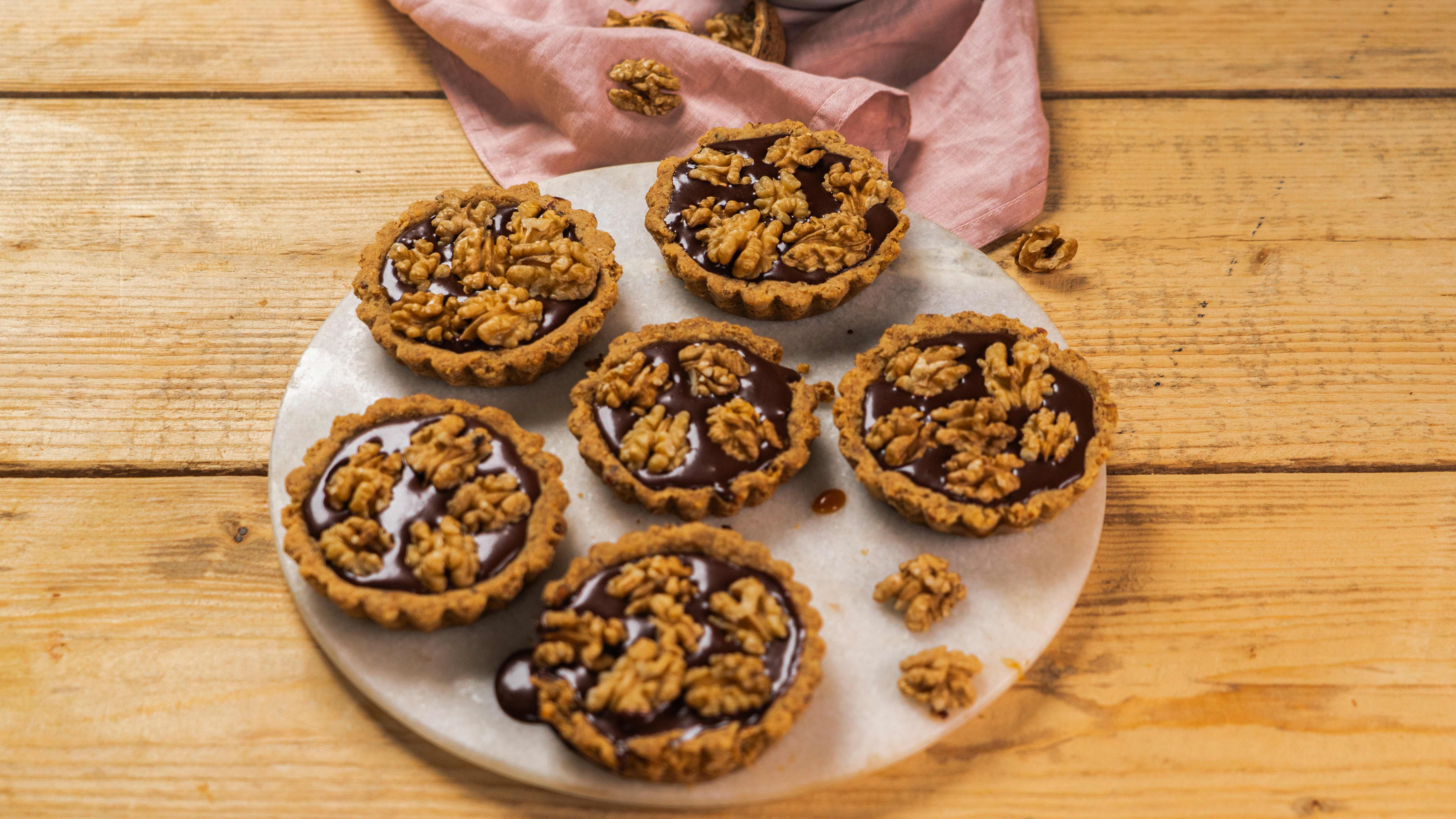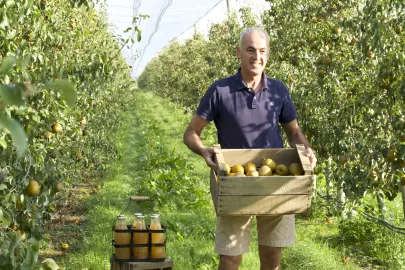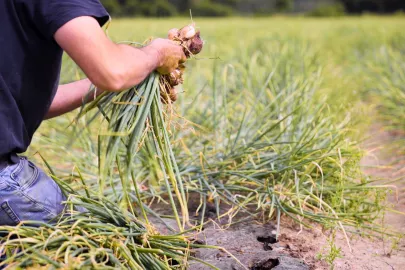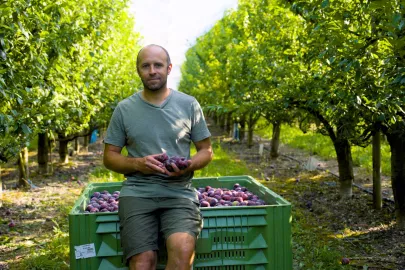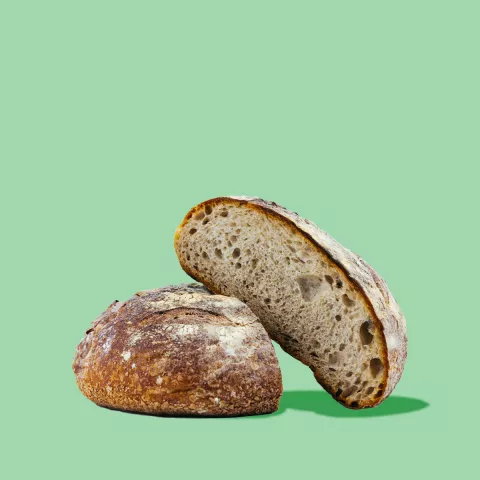Who doesn’t love a good walnut? Packed with health benefits and a delicious crunch, this humble nut can be consumed on its own or used to add an earthy, crumbly finish to savoury meals and desserts. Walnut trees grow abundantly all over the south of France, from the west to the east, making France the largest producer in Europe. Under the sweeping canopy of his walnut orchard, Sylvain Bergerand walks us through the process of cultivating these tiny energy bombs.
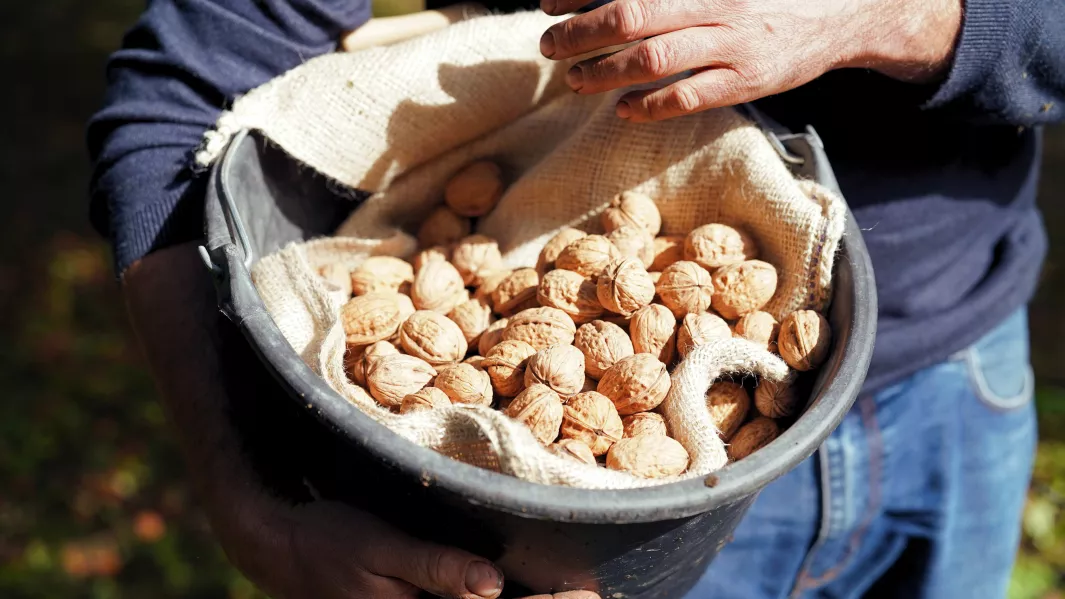
We are here in the lush commune of Notre-Dame de l’Osier, not far from the stunning limestone plateau of the Vercors mountain range. The dramatic cliffs, deep gorges and rolling hills offer a stunning backdrop to the enormous walnut orchard we are walking through, the trees aligned in neat rows, their dark foliage swaying in the breeze. “My greatest passion is planting a walnut tree and then watching it grow. It’s a long-term undertaking which requires patience and love because an orchard is planted for several generations,” explains Sylvain Bergerand, the young 41-year-old who manages the plantation with his brother.
The Walnut Route
Originally grown in the Persian empire, walnuts are said to have been brought to France by the Romans in the 13th century. But archaeological finds in the Périgord have found remnants of these nuts from 17,000 years ago, casting a shroud of mystery around the origins of this hardy nut. What is certain is that walnut cultivation is a historic sector in the south of France, with two protected designations – the Noix du Périgord in the south-west, and the Noix de Grenoble in the region of Isère – where Sylvain lovingly maintains his orchard.

In fact, 90% of the production in his orchard is destined for this label, which demands respecting stringent requirements like a set time of harvest and size criteria – any nut below the 28 mm threshold cannot be sold whole. Many different varieties flourish in France, such as the Lara and Marbot, which are also consumed fresh, or the Grandjean and the Corne, mostly eaten dry. Although walnut trees have a very long lifespan, they need to be about 12-years-old before they begin to yield a significant harvest.
The trees in Sylvain’s plantation produce Franquette walnuts, a variety that offers the versatility of both fresh and dry consumption possibilities. “The Franquette has a light-blond coloured husk which is elongated and fairly smooth, with an easy-to-extract kernel,” says Sylvain, as he explains how to tell when a tree is ready to harvest. Pulling down the branches of the tree to reveal the fruit, he reveals an outer green membrane that is brown at the tip and a hull which has split open to reveal its contents.
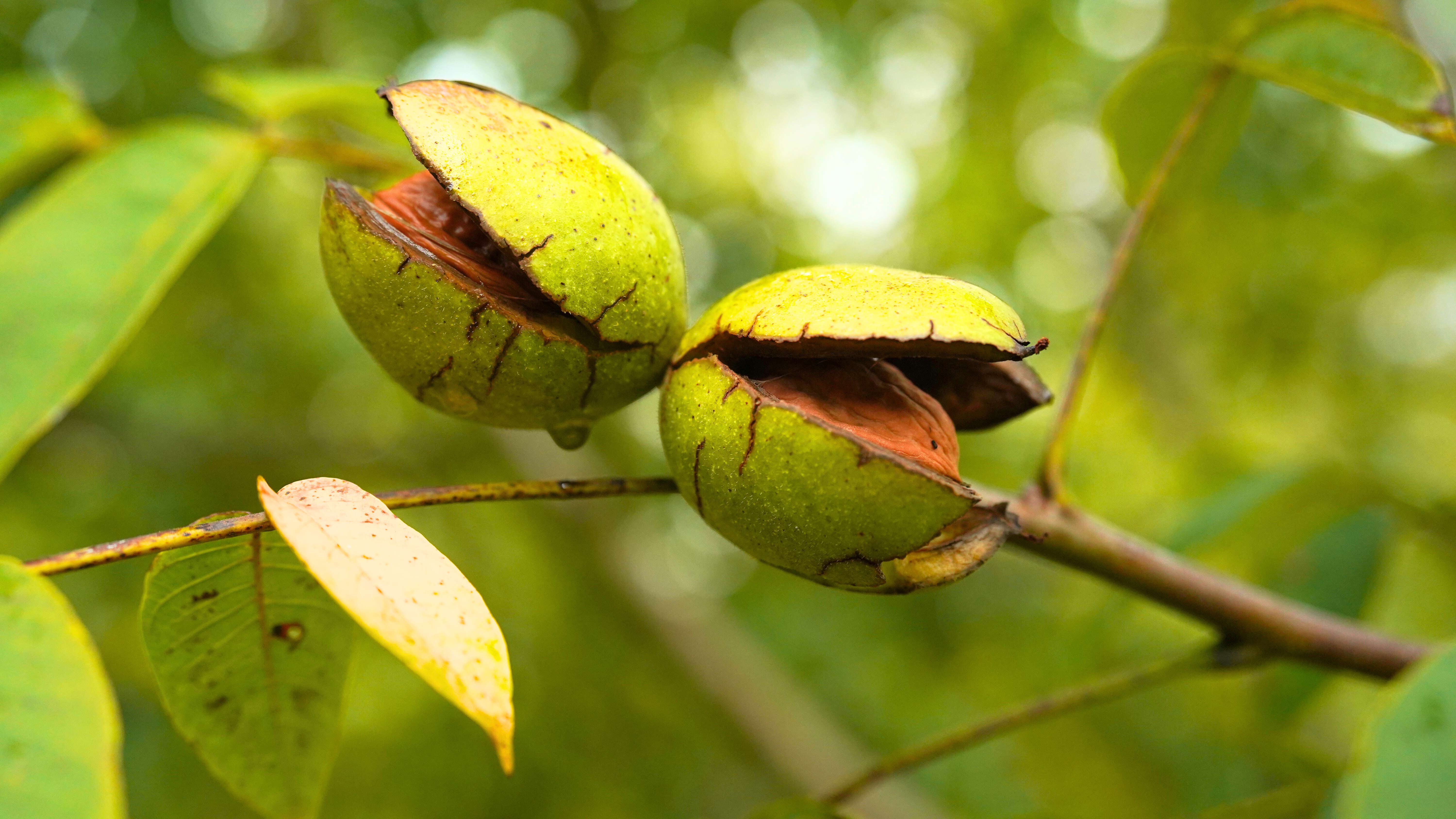
Walnuts are synonymous with autumn and require fall conditions to reach maturity. Naturally, the harvest begins in October. If the fruits don’t loosen from the tree and fall to the ground themselves from the rain or the wind, orchard owners like Sylvain use mechanical shakers to bring walnuts to the ground. Gone too are the days of the manual harvest, which can be tedious for produce like the walnut, given that each Franquette tree produces 20 to 30 kilos of walnuts every year! A mechanical collection machine sweeps the ground, cleverly rolling up the fallen nuts into its cargo bed.
A range of benefits
Come October, markets are flooded with fresh walnuts, which are sold in big mesh bags still in their shells. Fresh walnuts are best eaten on their own, though their mild, just-under-the-skin flavour can combine well with grapes, cheeses and a glass of red wine. The best way to pick fresh walnuts in a market is to listen to them: if the nut inside the shell moves when shaken, it has dried out and is past its consumption date. The relatively high-water content of walnuts also gives them a lighter profile. This means they must be consumed soon after purchase, storing for a maximum of a couple of days in the fridge.
While fresh walnuts are a delicacy in these parts, dry walnuts make up a large share of the production, as these can be stored and sold throughout the year. Following the walnut harvest in Sylvain’s orchard, the produce is put through husk removal and cleaning machines, after which inedible fruit is discarded through a manual sorting process. Then the walnuts are dried in ovens at 28 degrees Celsius for up to three days to produce the final yield. “To check if a walnut is properly dry, I break open the outer shell. If the inner shell is crumbly and brittle, the kernels will have the perfect crunch,” demonstrates Sylvain with a smile.

The age-old cultivation of walnuts in the south of France and their abundance means that the locals consume this delicious, healthy nut in several forms, drizzling walnut oil over salads for a nutty touch and even using the unripe green fruit to make a sweet walnut apéritif at the height of summer. Their complex taste – at once earthy, fruity, tart and with a hint of astringency – give them a multidimensional flavour that is best for balancing out sweet notes in food. Those with a sweet tooth will love the combination of nuts and chocolate in a delicious tart. Or dip some walnuts in chocolate butter and add them to berries, oats and Spätzle to make this sweet and savoury homemade granola. For savoury recipes, watch as they bring out the sweetness of roasted pears in this Bleu d'Auvergne and Mâche Salad with a walnut oil vinaigrette. The earthy taste of walnut and its creamy texture also make it a prized companion for blue cheese, so why not add it to a French-style cheese board or jazz up a blue cheese and ham croque-monsieur sandwich with some melted walnut butter? Soups, salads, jams, tarts, cakes and more – a little walnut can go a long way. It’s time to get cracking!
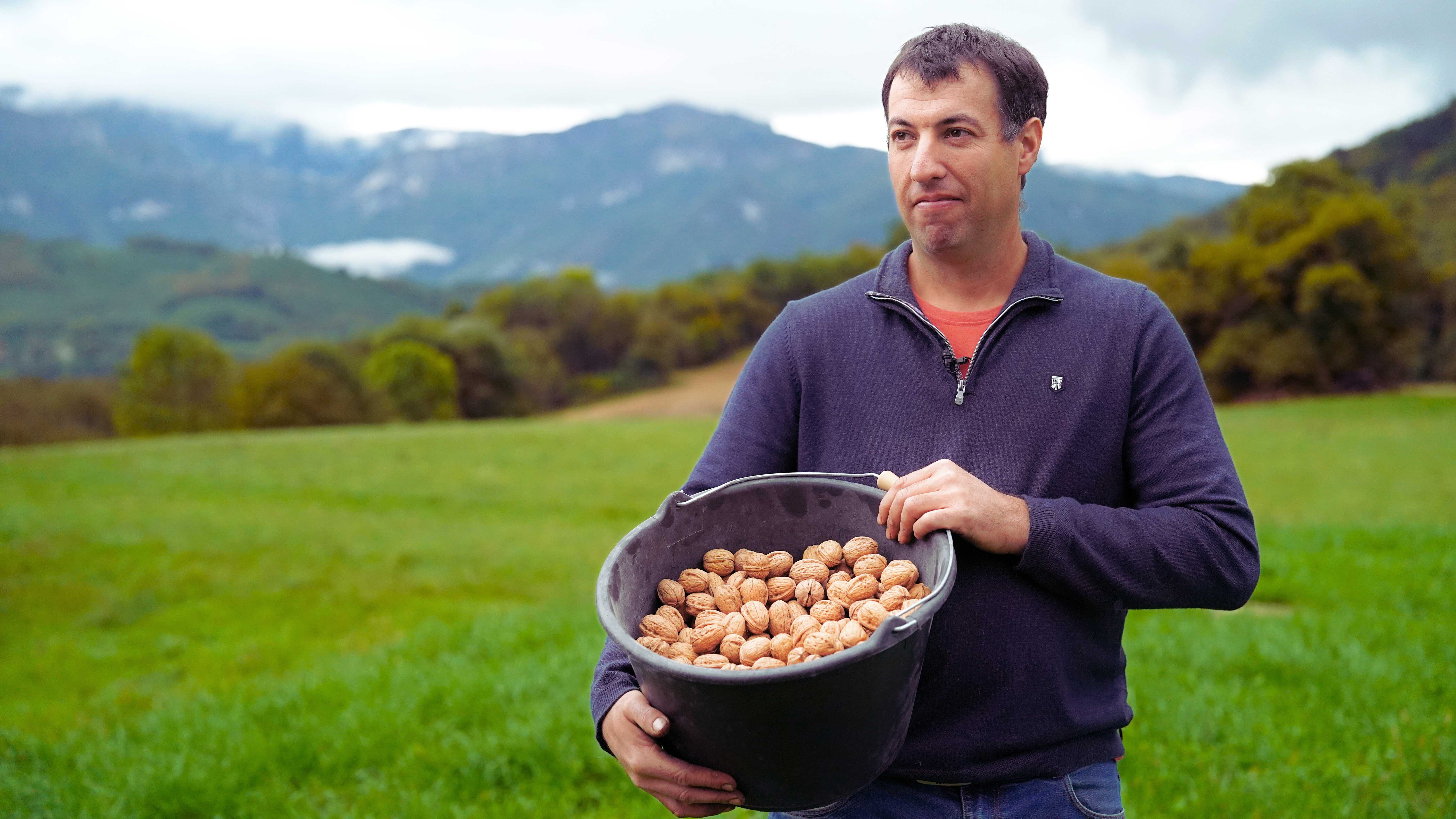
References:
https://agriculture.gouv.fr/noix-fraiches-et-noix-seches
https://www.lesfruitsetlegumesfrais.com/fruits-legumes/fruits-a-coque/noix/tout-savoir-sur-la-noix
https://www.interfel.com/services/documentation/guide-professionnel-noix-fraiche-092023
https://www.lesfruitsetlegumesfrais.com/fruits-legumes/fruits-a-coque/noix/choisir-la-noix


